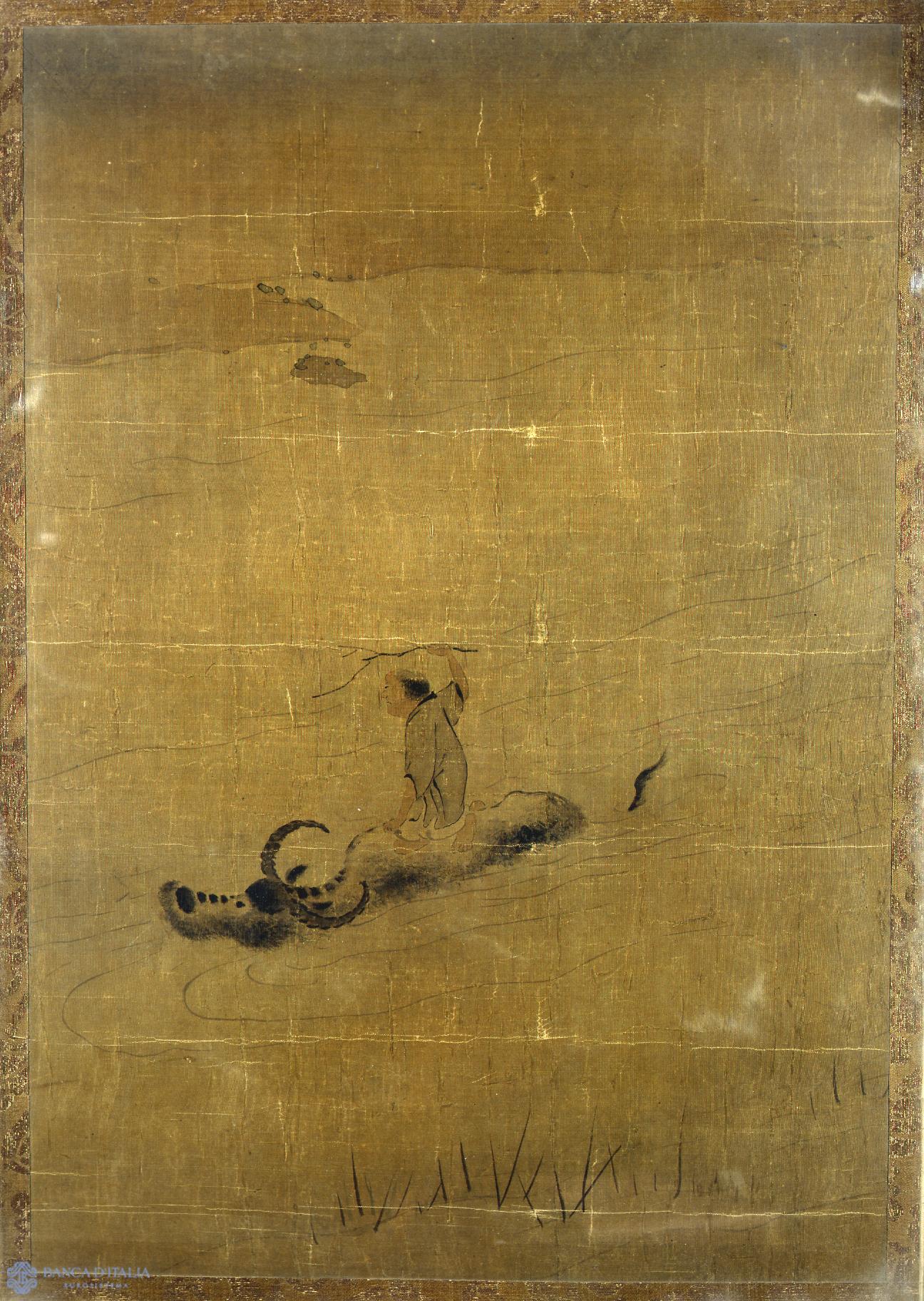The painting is on a support of silk which exposure to light has oxidized, making the figures less sharp than they once were. The damask border appears to part of the original frame.
In the centre of a watery landscape, a sandy bank faintly visible in the distance, a man sits astride a water buffalo guiding the powerful beast with a switch in his right hand, steadying himself with his left hand on the animal’s back as it ploughs through the water. In the lower part of the painting, blades of grass rising above the surface of the water are rendered with fine brushstrokes. A tenuous colour, faintly shaded, defines the sky, the water, the distant shoreline.
In the words of Paola Mortari, “the sparse signs have led to the painting being described as at the limits of semiotic expression”. The subject is rendered entirely through the rhythmic combination of a few essential vertical ‘male’ lines (Yang: the marsh grass, the man’s body, the raised arm) and horizontal ‘female’ lines (Yi: the ripples of water, the body of the water buffalo, the raised stick, the distant shore). For the rest, the real protagonist is the emptiness, “a void, however, that is charged with a sense of fullness and reality by the few brushstrokes”. The features of animal and man are etched briefly but incisively with elegant realism. The scene is structured with great awareness of the progression of the story and clear unfolding of the actions.
The skilful brushwork and choice of subject have led some experts to attribute the work to a master of the Zhejiang School in the Ming Dynasty (1368-1644). Others believe it to be the work of a Japanese artist owing to the various shadings used to define the separate areas of the composition. The borders of the frame would also appear to be of Japanese origin.
Uomo su Bufalo
Man Astride a Water Buffalo
Painting
17th century AD
16th century AD
15th century AD
14th century AD
Figurative

Date
14th -17th century
Material and technique
Painting on silk
Measurements
62,5 x 42,5 cm
Compiler
Augusta Monferini
